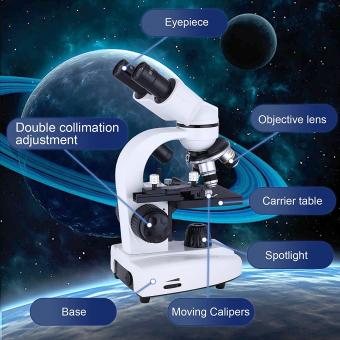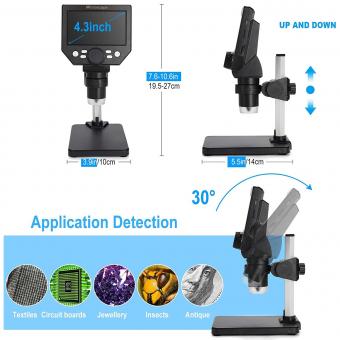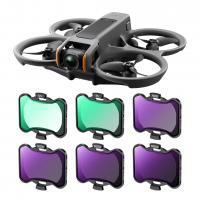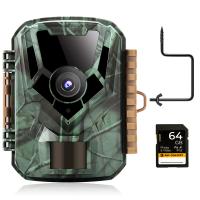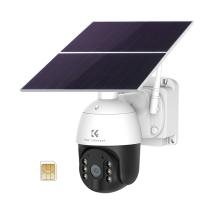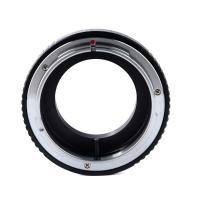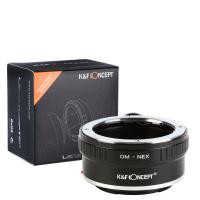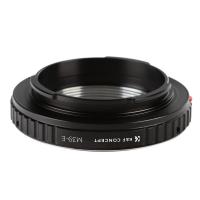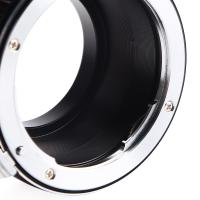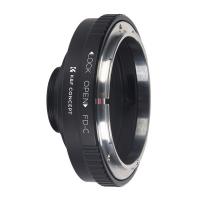How To See Dna Without A Microscope?
It is not possible to see DNA without a microscope, as DNA molecules are too small to be visible to the naked eye. Microscopes are essential for visualizing DNA, as they allow for magnification of the tiny structures.
1、 DNA extraction methods
How to see DNA without a microscope:
While it is not possible to see DNA with the naked eye, there are several methods that can be used to visualize DNA without the need for a microscope. One common method is to use a process called gel electrophoresis, which involves separating DNA fragments based on their size using an electric field. This technique allows scientists to visualize the DNA bands under UV light after staining the DNA with a fluorescent dye.
Another method is to use a technique called DNA fingerprinting, which involves amplifying specific regions of DNA using a process called polymerase chain reaction (PCR). The amplified DNA fragments can then be visualized using a technique called agarose gel electrophoresis.
Additionally, advances in technology have led to the development of portable DNA sequencers that can be used to visualize DNA in the field without the need for a traditional laboratory setup. These handheld devices are becoming increasingly popular for applications such as environmental monitoring, forensics, and medical diagnostics.
DNA extraction methods:
There are several DNA extraction methods that are commonly used in research and diagnostics. These methods typically involve breaking open the cells to release the DNA, followed by purification to remove proteins and other contaminants. Common techniques include phenol-chloroform extraction, silica membrane-based purification, and magnetic bead-based purification.
The latest point of view on DNA extraction methods emphasizes the importance of optimizing extraction protocols for specific sample types and downstream applications. This includes considering factors such as the type of sample (e.g., blood, tissue, or environmental sample), the presence of inhibitors, and the desired yield and purity of the extracted DNA. Additionally, there is a growing interest in developing rapid and automated DNA extraction methods to streamline the process and make it more accessible for a wider range of applications.
2、 Gel electrophoresis techniques
To see DNA without a microscope, one can use gel electrophoresis techniques. Gel electrophoresis is a widely used method for separating and analyzing DNA, RNA, or proteins based on their size and charge. This technique allows scientists to visualize DNA fragments and analyze their sizes and quantities.
To perform gel electrophoresis, a sample of DNA is loaded into wells on a gel, typically made of agarose or polyacrylamide. An electric current is then applied to the gel, causing the DNA fragments to move through the gel matrix. Smaller fragments move faster and travel farther through the gel, while larger fragments move more slowly and remain closer to the point of origin.
After the electrophoresis process is complete, the DNA fragments can be visualized using various staining techniques, such as ethidium bromide or SYBR Safe, which fluoresce when bound to DNA. The DNA bands can then be observed under UV light or using specialized imaging systems.
In recent years, advancements in gel electrophoresis technology have led to the development of high-resolution techniques such as capillary electrophoresis and microfluidic electrophoresis, which allow for even greater sensitivity and resolution in DNA analysis.
Overall, gel electrophoresis techniques provide a powerful and accessible means of visualizing DNA without the need for a microscope, and continue to be a fundamental tool in molecular biology research and diagnostics.
3、 DNA visualization reagents
To see DNA without a microscope, one can use DNA visualization reagents that allow for the detection and visualization of DNA in a simple and accessible manner. One such reagent is ethidium bromide, which is commonly used in laboratories to stain DNA for visualization under UV light. Ethidium bromide intercalates between the base pairs of DNA, causing it to fluoresce when exposed to UV light, making it visible to the naked eye.
Another option is using DNA gel stains such as SYBR Safe, GelRed, or GelGreen, which are safer alternatives to ethidium bromide and provide similar DNA visualization capabilities. These stains can be added directly to DNA samples before or after gel electrophoresis, allowing for the visualization of DNA bands under UV light without the need for a microscope.
In addition to these traditional methods, there are also emerging technologies such as DNA origami, which allows for the visualization of DNA structures through the self-assembly of DNA strands into specific shapes and patterns. This approach provides a unique way to visualize DNA without the need for a microscope and has potential applications in nanotechnology and bioimaging.
Overall, the use of DNA visualization reagents and emerging technologies provides accessible and innovative ways to see DNA without the need for a microscope, offering valuable insights into the structure and behavior of DNA molecules.
4、 Fluorescent DNA dyes
One way to see DNA without a microscope is by using Fluorescent DNA dyes. These dyes are designed to bind specifically to DNA molecules and emit fluorescence when exposed to certain wavelengths of light. By using these dyes, scientists can visualize the presence and distribution of DNA in a sample using techniques such as gel electrophoresis, fluorescence microscopy, or flow cytometry.
In recent years, there have been advancements in the development of highly specific and sensitive fluorescent DNA dyes, allowing for more accurate and detailed visualization of DNA. These dyes can be used to stain DNA in living cells, enabling researchers to track the movement and localization of DNA within the cell in real-time. Additionally, some fluorescent DNA dyes are designed to be cell-permeable, allowing for the visualization of DNA in intact cells without the need for cell lysis or DNA extraction.
Furthermore, the latest point of view on using fluorescent DNA dyes involves their application in high-throughput screening and imaging techniques. These dyes are being utilized in automated imaging systems to analyze large numbers of samples rapidly, making it possible to study DNA dynamics and organization on a scale that was previously unattainable.
Overall, fluorescent DNA dyes have revolutionized the visualization of DNA without the need for a microscope, providing valuable insights into the structure, function, and behavior of DNA in various biological contexts.






